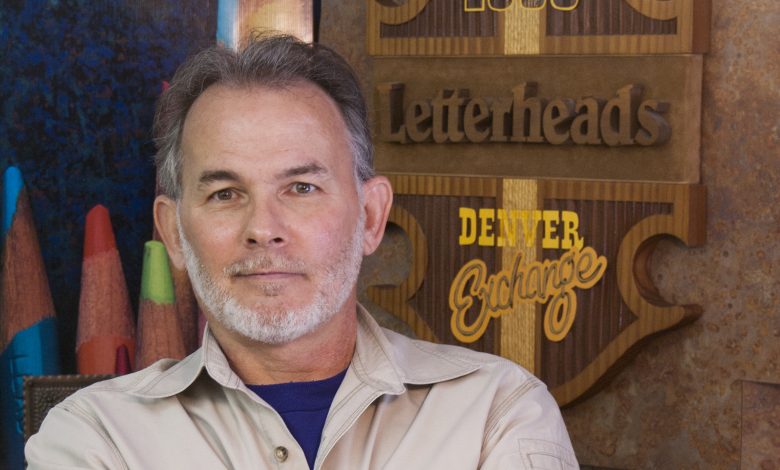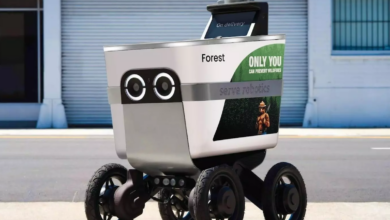Chat with Matt: An Interview with Brother Zank

This month’s interview is with Brother Zank, owner of Custom Craftsman Signs in Sevierville, Tennessee.
What was your path to becoming a sign maker?
I got neck bit early on by the Sign Shop Vamp. It was not difficult to imagine the creative opportunities at Brilliant Electric Sign Co. in the Cleveland Flats of the late ’70s where they crafted and craned electric signs of all descriptions, where patterns were penciled and channel letters sculpted by hand. The potential to develop skills in making and conceiving was enormous “I’m in”. After a few years my new bride and I relocated to Lexington, Kentucky, adding management to the ongoing efforts to develop skills in all areas of the industry. It was there that I became aware of the importance of good design, which led to the discovery of the Letterheads. After 10 years of working around Lexington and finally launching Custom Craftsman Signs, Vicki and I relocated once again to the Smoky Mountains of East Tennessee for its nature and unique opportunities and to develop a rustic mountain craftsman style. In the early years of self-employment, I believed (as I think most of us did; or do) that we had to design and produce products that we could create entirely in-house. The limitations were crippling to creativity.
Once I accepted the concept of outsourcing, it opened up the ability to design and create at the highest level of workmanship without the need to develop unlimited and unrealistic skill sets. The challenges of managing the players are substantial but the satisfaction of product quality and architectural longevity is enormous and allows our in-house efforts to focus on the attention to detail required to produce the graphic elements we contribute to the overall compositions.
As an ambitious young sign maker I was disappointed at the culture of “not sharing knowledge” that surrounded the sign industry. The fear of being out shined or replaced by younger, cheaper labor was plaguing our trade. I believe it was 1983 I first heard of the Letterhead movement and Jackson Signs Oklahoma Bash. The concept of “elevating our trade and rising with that tide became a career goal. Inspired by the skills and mindsets of our titans of industry like Noel, Mike & Darla, Glawson, Oatis, and Jay Cooke as well as design guidance from Mike Stevens, Mark Baty and the earlier genius of Strong & Adkinson prove that personal evolution requires us to stand on the shoulders of those who came before us.
The monument signage you create is both intricate and unique. What is your process when coming up with a new design for a client?
The broad scope of my process begins with study of the target business or individual, which informs concept design and budget restraints. The process continues with Code and regulatory research, budget negotiations, contracts, concept design, presentation, Sub-Contractor drawings, pricing, scheduling, coordinating, purchasing, fabrication, finishing, supervising the team, final installation, landscaping and lighting. The simple answer to your question is applied study & fresh perspective guide the design process.
Your shop isn’t just a sign production facility, but also a gift shop. What led you to the decision to move in this direction and how has it changed your overall business?
The name of our business “Custom Craftsman” is the result of a fairly extensive process of evaluating names appropriate for defining what we wanted to be back in 1988, still today everything is custom and the focus is on craftsmanship. We were never limited to signs, however. In fact, we started producing more architectural elements for Victorian building renovations in Lexington and gifts for those “difficult to buy for” folks who seem to have everything. Then after a couple decades of largely commercial sign production we began re-evaluating from a personal perspective resulting in a kind of full circle scenario to a low-volume, high-value esoteric market. The mutual satisfaction of creating a statement piece to occupy a client’s personal space and display the principals that define their life is so meaningful and allows for the birth of high-end heirlooms rich in one-offity and value for generations to come as well as aesthetic and emotional pride to my client.
Our retail space is still under construction and will house examples of our work as well as electronic imagery of other offerings including semi-custom products and art from a very short list of respected makers around the globe. The retail element is perhaps the most substantial change in our business model.
What sign-making technologies are you currently looking into adding to your shop’s equipment list?
While focusing on the refinement of skills in design and crafting by hand I have largely ignored many of the technology evolutions of the past decades. One of the exceptions has been a great interest in 3-D printing. I’ve been following it for several years and attending webinars for some time now. I am incorporating 3-D print elements in a few projects that may have been cast or machined in the past. I assure you it is the next big thing and will be a go-to technology for not just our current one-off applications but in big box, auto parts stores and others. To reduce inventory and allow customization of product. I plan to continue my study of this industry for my business and to advise those to come.
What’s the most important piece of equipment in your shop, and how long did it take you to become proficient using it?
As I look over the shop I realize that almost every piece of equipment is designed to cut one thing or another. I’ve always been a fan of employing the best equipment you can afford and one of my favorites is a 27″ Bridgestone 3 Phase vertical bandsaw we bought new in 1992, but all the machinery and equipment is secondary to ingenuity. I consider much of the work we do prototype which by its very nature requires problem solving and critical thinking best achieved with common sense and ingenuity. Becoming proficient with that is a career long exercise, with lots of reps.
In 2016, your area near Sevierville was hit hard by a wildfire. What were some things Custom Craftsman did to help people or businesses in your area through that difficult time?
The November 2016 East Tennessee wildfires were devasting not only for the families of the 14 who died and 175 injured but the whole region. Even though we see around 11 million visitors a year, the permanent population is comprised of a small tight-knit community, everyone knows folks who lost homes or businesses (or both).
We did our little bit helping out and transporting pet food and supplies from donation centers and such, but the real story is the outpouring of compassion and generosity of companies large and small and the American public, local government officials, police, fire, and all emergency response professionals as well as compassionate stars like Zac Brown and remember Dolly Parton is “of this Place.” She has always done great things for those who need it most and she really stepped up this time with her “My People Fund”. Many support services and rebuilding efforts continue today, but this costly disaster has brought us closer together and defined “Mountain Tough.”




